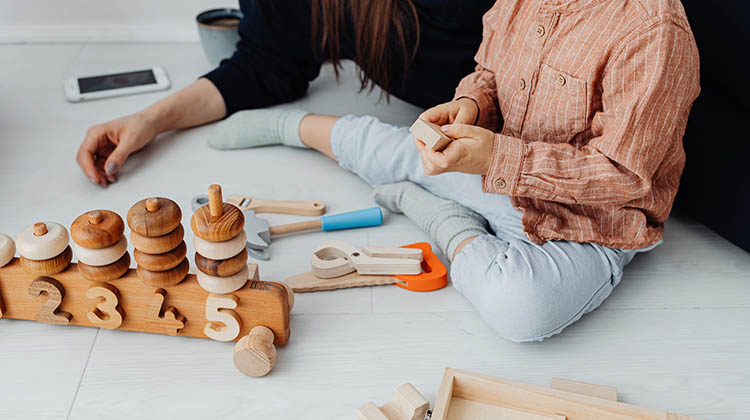Unlocking Learning Potential: Toys as Educational Tools

It has long been known that toys provide youngsters with amusement and happiness. However, their potential as teaching aids is frequently disregarded or undervalued. In the quickly changing world of today, it is essential to take advantage of every chance to foster a child's intellectual growth. When used wisely, toys can be effective teaching tools that support kids' cognitive, social, and emotional development. So, here are a few things that could help you learn how to use toys as educational resources, as well as a couple of things that are crucial when it comes to revealing their hidden potential to improve a child's educational path.
The Power of Play
Toys are the instruments that help children play, which is an essential part of childhood. Play is the main way that kids learn about the world around them; it's not only a recreational pastime. It enables children to try new things, figure out problems, and interpret their experiences. This idea is furthered by educational toys, which offer opportunities for play-based learning that are structured, both at home and in kindergarten. They promote active discovery and exploration, both of which are critical to the development of young children. Playing with educational toys helps kids learn important skills and knowledge while having a great time. This method of education, which combines play and learning, is quite effective in the long run.
Fostering Creativity and Imagination
The potential of educational toys to foster children's imagination and creativity is one of its biggest advantages. Children can build their imaginary worlds, tales, and scenarios with the help of these toys, which offer a platform for self-expression and discovery. Children are allowed to follow their imaginations and create anything they want, whether it's complex block constructions, art projects, or creative role-playing. Encourage your child to play in an unstructured, open-ended manner where their imagination is free to roam. Children who engage in freeform play are more equipped to solve problems and think creatively, which helps them face the obstacles that come with growing up.
Choosing the Right Educational Toys
Choosing the appropriate toys is the first and most important step in using them as teaching materials. In terms of their potential to teach, not all toys are made equal. When selecting toys, it's critical to take your child's age, hobbies, and developmental stage into account. Educational toys ought to pique students' curiosity, foster critical thinking, and inspire creativity. Building blocks, puzzles, versatile Montessori toys for 2 year olds, educational games, painting supplies, and science kits are a few fantastic examples. When selecting toys, keep safety in mind and make sure there are no little parts that could cause choking hazards. The ideal toys function as instruments that complement a child's particular learning requirements and preferences.
Promoting Social Skills
Teaching social skills can also be effectively facilitated by educational toys. Even while a lot of educational toys are meant to be played with alone, there are several that promote group play. For instance, cooperative board games help kids develop communication and collaboration as they cooperate to accomplish a common objective. Children learn how to share, negotiate, take turns, and settle disputes while they play with one another. These social skills are essential for future academic and career achievement as well as for having positive playtime interactions. Parents and other adults must provide their kids the chance to play with their peers and assist them in navigating social situations so they may learn vital life skills.
Enhancing STEM Learning
Proficiency in STEM fields - science, technology, engineering, and mathematics - is crucial in today's technologically advanced society. Early STEM idea introduction and reinforcement can be greatly aided by educational toys. Toys with a STEM focus, such as coding games, robotics kits, and microscopes, might pique a child's interest in these subjects. Children who play with STEM toys gain the ability to solve problems, reason logically, and develop a sincere love for inquiry-based learning. To cultivate a passion for STEM fields and lay the groundwork for future academic and professional success, encourage experimentation and inquiry. Playing with educational toys not only makes learning these difficult subjects easier but also more entertaining and captivating.
Monitoring and Balancing Screen Time
Achieving a balance between educational toys and screen time is essential in the digital age. Even while there are educational applications and programs available that can offer worthwhile learning experiences, a child's development may suffer from excessive screen use. Educational toys provide a concrete, experiential learning opportunity that encourages both movement and sensory engagement. Children encounter the tactile and kinesthetic parts of learning - a crucial component of fine and gross motor skill development - when they engage with physical toys. technology's critical for educators, parents, and guardians to keep an eye on screen usage and set time limits so that technology enhances rather than takes the place of instructional objects. Finding the ideal balance guarantees that kids learn in a comprehensive and well-rounded way.
Playthings aside, toys can significantly influence a child's educational path. Selecting and utilizing educational toys effectively can boost creativity, develop social skills, improve STEM education, and offer a plethora of chances for cognitive development. It is your duty as a parent, guardian, or teacher to establish an atmosphere where learning and play go hand in hand. You may prepare a child for a prosperous future by realizing the educational potential of toys and integrating them into their everyday lives. Now, embrace the potential that educational toys have, and watch as a child's play and learning grow side by side.
Image by Karolina Grabowska